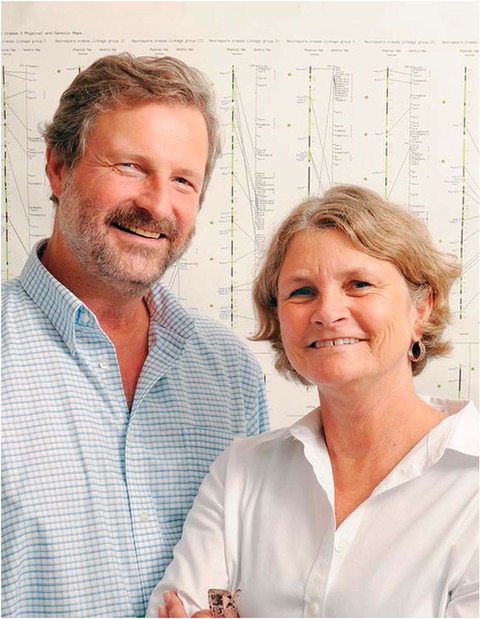Jennifer Loros, PhD, a professor of Biochemistry and Cell Biology and of Molecular Systems Biology, and Jay Dunlap, PhD, the Nathan Smith Professor of Molecular and Systems Biology and of Biochemistry and Cell Biology, at Dartmouth’s Geisel School of Medicine, have both received the Pioneer Program Award from the Society for Research on Biological Rhythms (SRBR).
Established in 1986, SRBR is an organization of international scientists, clinicians, and industry experts who promote basic and applied research in all aspects of biological rhythms. It is dedicated to advancing rigorous, peer-reviewed science and evidence-based policies related to sleep and circadian biology.
The SRBR Pioneer Program recognizes and honors a distinguished group of chronobiologists and sleep scientists who have helped advance the work of SRBR—now the largest society that encompasses scientists who work on circadian and other biological rhythms. The seven awardees for 2021 are individuals who have provided leadership in the field of biological rhythms and sleep, made significant contributions to their society and official journal, and/or engaged in research training and mentoring for many members of their community.

“We were surprised and quite moved to receive this award,” say Dunlap and Loros. “Running our joint laboratories at Geisel has afforded the amazing opportunity to work with many gifted and wonderful scientists, nearly 70 in all. The most rewarding part of life as a scientist has been the relationships we’ve formed with people both within the laboratory and within the wider field of circadian rhythms.”
For more than three decades, Dunlap and Loros have been making significant contributions to the field of chronobiology by investigating the underlying mechanisms of circadian systems in Neurospora, a fungus commonly used as a model organism in biology, and in mice and mammalian cell culture models.
Circadian clocks represent a subset of natural rhythms in biology with period lengths close to 24 hours and arise from assembly of an intracellular timekeeper made from genetically encoded parts. They are entrained to run at exactly 24 hours by the light/dark and warm/cool cycles resulting from the diurnal rotation of the earth.
“A staggering amount of biology is controlled by these clocks including sleep/wake and activity cycles in mammals, flowering in many plants, reproduction in microbes, and expression of at least a third of the genes in most organisms, as examples,” they explain. “Our research has been aimed at several broad questions, all at the cellular/molecular level.”
One broad set of questions that has been Dunlap’s focus has centered on how the core clock is assembled and works. This research has revealed a negative feedback loop involving gene and protein expression whose regulatory architecture is conserved from fungi to humans, and has set the stage for understanding how environmental cycles entrain these circadian clocks.
Loros’ main focus has been to understand how time-of-day information generated by the clock is transferred to control other processes in the cell, ultimately resulting in regulated daily activities of the organism. For most microbes, animals, and plants this has turned out to be by regulating the expression of genes, so they are expressed at one time of day and not at the opposite time of day.
A second major question in her research has been determining how light information is captured by a microbial cell to set the time of day of the molecular clock within that cell. This has been shown to be via a photoreceptor molecule that changes its shape when exposed to light. This photoreceptor then becomes active in expressing a gene that is central to the functioning of the molecular clock. This general mechanism has been found to be conserved in animals and humans.
Dunlap earned dual BS degrees from the University of Washington and a PhD in biology from Harvard, then carried out postdoctoral research in molecular genetics at the University of California, Santa Cruz. He joined Dartmouth’s medical school faculty in 1984.
Loros earned a BA and PhD in biology at the University of California, Santa Cruz. She then came to Dartmouth’s medical school as a post-doc, joining the faculty in 1988.
Founded in 1797, the Geisel School of Medicine at Dartmouth strives to improve the lives of the communities it serves through excellence in learning, discovery, and healing. The Geisel School of Medicine is renowned for its leadership in medical education, healthcare policy and delivery science, biomedical research, global health, and in creating innovations that improve lives worldwide. As one of America’s leading medical schools, Dartmouth’s Geisel School of Medicine is committed to training new generations of diverse leaders who will help solve our most vexing challenges in healthcare.